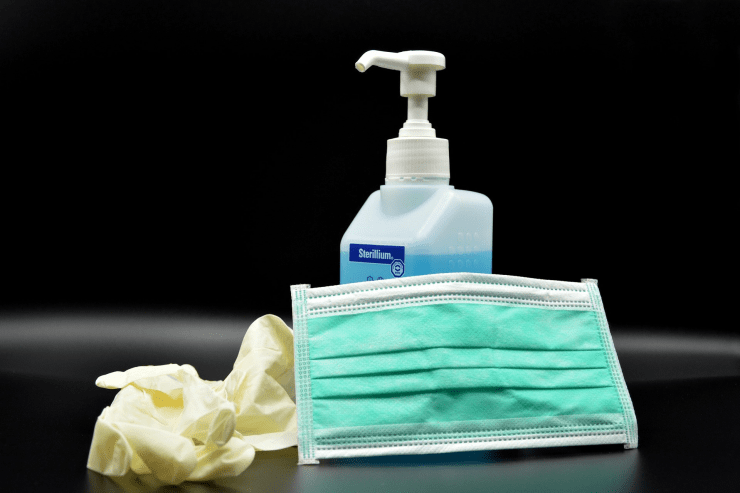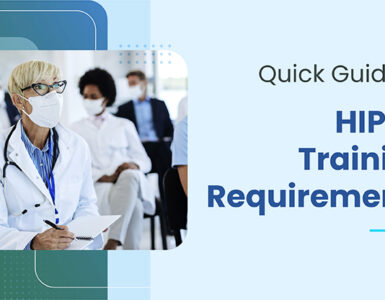On July, 15 Virginia adopted COVID-19 Safety standards for workplaces. It has become the first state to set such standards. The emergency workplace safety standards aim at providing a safe working environment to workers. All Virginia employers must follow these standards.
To comply with workplace safety standards, employers must
- Create a workplace that’s safe, and
- Protect employees from COVID-19.
The standards include regulations for sanitation, social distancing, face covering, and hazard communication. They also mandate COVID-19 training for all employees.
Virginia COVID-19 Safety Standards
Social distancing, sanitation, and use of face covering
Employees must provide workers with personal protective equipment. They must ensure that the employees interacting with customers wear face masks.
Employees also need to follow social distancing rules during work. And, if that’s impossible, the employer must increase access to handwashing and sanitizers.
You should also install physical barrios for mitigating the spread of the virus.
The employer must also ensure regular cleaning of all high-contact surfaces at their workplace. This includes cleaning of all common spaces, such as bathrooms and the lunch area at the end of each shift.
Employees testing positive for COVID-19
Employees testing positive for COVID-19 should not be allowed to return to work. They should return only after 10 days, or if they test negative twice consecutively. Moreover, the information that an employee has tested positive, should be shared with the rest of the workforce within 24 hours.
Self-monitoring for symptoms
You should encourage employees to monitor their own health. You must also train your employees on self-monitoring methods.
Classify jobs
Under the new standards, employers must classify their job-tasks. All tasks should be classified as very-high risk, high risk, medium risk, and lower risk. They must study the possible exposure to COVID-19 for each task.
Four levels of exposure risk to COVID-19
- Very high exposure risk
Tasks where employees work with known and suspected cases of COVID-19 patients. Such tasks involve performing aerosol-generating procedures, and collecting samples from COVID-19 patients.
- High exposure risk
Tasks in this category should include jobs that expose workers to known or suspected COVID-19 patients. A good example is doctors entering the rooms of COVID-19 patients.
- Medium exposure risk
Such tasks involve contact inside six-feet with people who could be infected with COVID-19. Examples include poultry and meat processing, agriculture, transportation, schools, restaurants, and grocery stores.
- Low expose risk
Tasks that do not need contact inside six-feet with people suspected or infected with COVID-19.
Employers need to ask their employees working on very-high risk, high risk and medium risk for COVID-19 symptoms before each shift.
Infectious disease response plan
Businesses with very-high and high risk jobs should prepare a written infectious disease response. The same applies to businesses with medium risk tasks, but having 11 or more employees.
Such employers must put in place a written infectious disease response against COVID-19. They must also train their employees on their response plan and the hazards of the disease.
Manage records
Employers need to keep records for showing compliance. This includes records of their training program and compliance efforts.
You can also choose to continue following the CDC guidelines. But, you must ensure that you are covering both mandatory and non-mandatory guidelines against COVID-19 given by the CDC. And, that you aren’t missing on standards covered in the emergency standards.
Penalties under the COVID-19 Safety Standards
The safety standards are enforceable. All businesses under the jurisdiction of Virginia Department of Labor and Industry need to abide by the COVID-19 safety standards. Businesses can face penalties of up to $130,000 for violating these rules.
Moreover, the standards grant workers protection from retaliation if they feel that things are unsafe at work. Employers are also prohibited from discriminating against such workers. Workers can file a formal complaint with the federal Occupational Safety and Health Administration (OSHA).
These emergency standards would be implemented in the next few weeks, and would remain in place for six months.
You can access the Emergency workplace safety standards on the Virginia Department of Labor and Industry website at www.doli.virginia.gov. You can download the standards, infectious disease preparedness and response template, and the training guidance from the website.
The text of the new rule is still being finalized. The full text of the law should be available around July 27.
These standards are the first mandatory safety regulations for COVID-19 in the nation.
OSHA Guidance against COVID-19
The COVID-19 guidance issues by OSHA are non-mandatory. They are not legally binding on the employer. OSHA has also issued several clarifications on how their existing rules apply to employers during the pandemic.
Early this month, OSHA released a new COVID-19 Frequently Asked Questions website. It consolidates its recommendations along with that of the Centers for Disease Control and Prevention on handling COVID-19 issues. You can visit the FAQ website for more information on handling workplace COVID-19 issues.
The website answers questions it received from people. It covers issues such as workplace testing, employee training, and best practices for handling COVID-19. The FAQs also refer employers to relevant CDC guidance and OSHA standards for worker safety and health.
If you want to access CDC guidance on workplace safety, visit this page.
You can also take the COVID-19 training developed from the most recent WHO advisories. The training is free of cost. You’ll get plenty of useful advice for protecting yourself from COVID-19.
What are your views about the new Virginia Emergency workplace safety standards? Would they help? You can share your views in the comments below.





